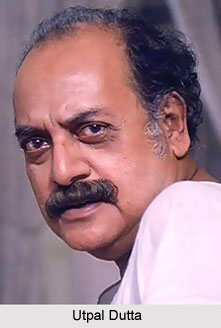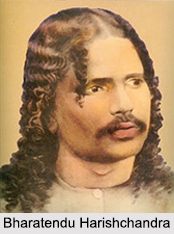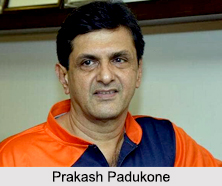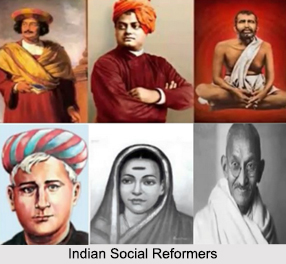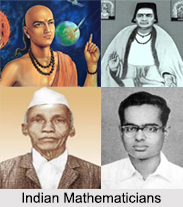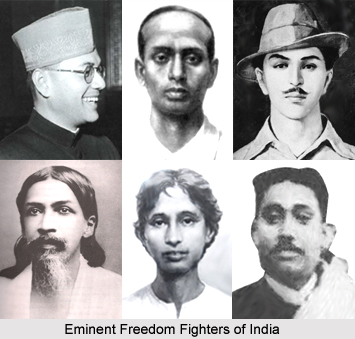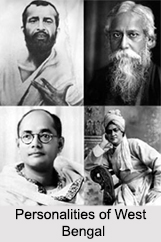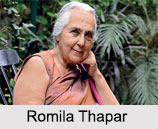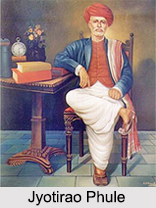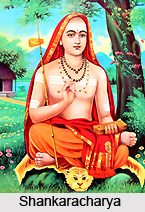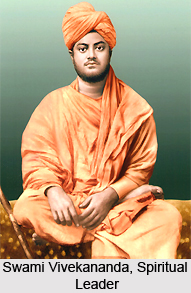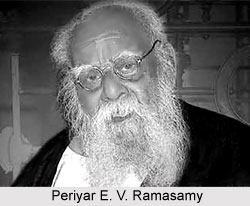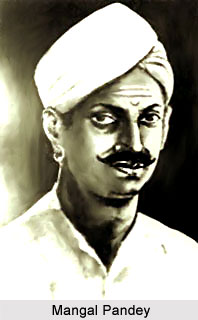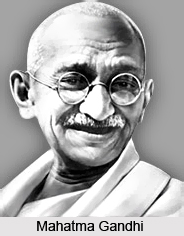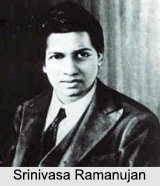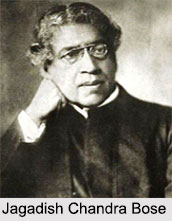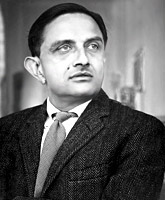 Vikram Sarabhai was physicist of India and is also considered as the Father of the Indian Space Programme. After the Russian, Sputnik launch Vikram Sarabhai convinced the Government of India of the significance of a space programme for a developing country. Thus, it resulted in the establishment of the Indian Space Research Organisation (ISRO). Sarabhai was the successor of Dr. Homi Jehnagir Bhabha, as the chairman of the Atomic Energy Commission. Dr. Vikram Sarabhai emphasised the significance of a space programme in his quote: "There are some who question the relevance of space activities in a developing nation. To us, there is no ambiguity of purpose. We do not have the fantasy of competing with the economically advanced nations in the exploration of the moon or the planets or manned space-flight. But we are convinced that if we are to play a meaningful role nationally, and in the community of nations, we must be second to none in the application of advanced technologies to the real problems of man and society."
Vikram Sarabhai was physicist of India and is also considered as the Father of the Indian Space Programme. After the Russian, Sputnik launch Vikram Sarabhai convinced the Government of India of the significance of a space programme for a developing country. Thus, it resulted in the establishment of the Indian Space Research Organisation (ISRO). Sarabhai was the successor of Dr. Homi Jehnagir Bhabha, as the chairman of the Atomic Energy Commission. Dr. Vikram Sarabhai emphasised the significance of a space programme in his quote: "There are some who question the relevance of space activities in a developing nation. To us, there is no ambiguity of purpose. We do not have the fantasy of competing with the economically advanced nations in the exploration of the moon or the planets or manned space-flight. But we are convinced that if we are to play a meaningful role nationally, and in the community of nations, we must be second to none in the application of advanced technologies to the real problems of man and society."
Early Life of Vikram Sarabhai
Vikram Ambalal Sarabhai was born on 12th of August, 1919 to a wealthy business family in Ahmedabad, Gujarat. His father, Ambalal Sarabhai was an affluent industrialist. Vikram Sarabhai was one of the eight children of Ambalal and Sarla Devi. Several leaders of the Indian freedom struggle like Mahatma Gandhi, Jawaharlal Nehru, Moti Lal Nehru and Rabindranath Tagore used to visit the Sarabhai house very frequently as the family was involved in the freedom struggle of the country.
After completing his matriculation from Gujarat College in Ahmedabad, Dr. Sarabhai moved to England and joined the St. John`s College, University of Cambridge. In 1940 he received the Tripos in Natural Sciences from Cambridge. When World War II began, he returned home and joined as a research scholar under Chandrasekhar Venkata Raman at the Indian Institute of Science, Bengaluru. Vikram Sarabhai began research in cosmic rays under his guidance. His interest in solar physics and cosmic ray led him to set up many observation stations around the country. He returned to Cambridge after the war. He was awarded a PhD in 1947 for his thesis titled Cosmic Ray investigation in Tropical Latitudes.
Researches of Vikram Sarabhai
Vikram Sarabhai did research on the time variations of cosmic rays. The research concluded that meteorological effects could not entirely affect the observed daily variations of cosmic rays. Further, the research also concluded that the residual variations were wide and global and these were related to variations in solar activity. Vikram Sarabhai visualised a new field of research opening up in solar and interplanetary Physics.
Contributions of Vikram Sarabhai
Vikram Sarabhai played an influential role in establishing the Physical Research Laboratory in Ahmedabad, in November 1947, after returning from Cambridge. Establishment of Physical Research Laboratory was the first step indeed. The laboratory was established in a few rooms in M.G. Science Institute of the Ahmedabad Education Society. With active support from Dr. Homi Jehangir Bhabha, the father of India`s nuclear science programme, Vikram Sarabhai, set up the first Rocket Launching station (TERLS). The station was established at Thumba, near Thiruvananthapuram, on the Arabian Coast. With remarkable infrastructure, personnel, communication links and launch pads, the first rocket with sodium vapour payload was launched on 21st of November, 1963. As a result in 1965, the UN General Assembly gave recognition to TERLS as an international facility.
The Satellite Instructional Television Experiment (SITE) was launched during 1975-76 as a result of his conversation with NASA in 1966. Aryabhata, the first Indian Satellite, was put in orbit in 1975, as a result of Dr. Sarabhai`s project. Dr. Sarabhai was very interested in science education and founded a Community Science Centre at Ahmedabad in 1966. Dr. Vikram Sarabhai established many other institutes which are of international repute. Most notable among them are Indian Institutes of Management (IIMs) which are considered world class for their management studies. He also established Ahmedabad Textiles Industrial Research Association (ATIRA), Centre for Environmental Planning and Technology (CEPT) and Blind Men Association. Blind Men Association helps visually challenged people with required skills and support.
Achievements and Awards of Vikram Sarabhai
Dr. Vikram Sarabhai was awarded the Dr. Shanti Swarup Bhatnagar Prize in the year 1962. He was conferred with the Padma Shri Award in 1966 and was awarded Padma Vibushan in 1972. Dr. Vikram Sarabhai was appointed Chairman, Atomic Energy Commission in May 1966 after the death of Dr. Homi Jehangir Bhabha. He also held other distinguished positions like President of the Physics section, Indian Science Congress in 1962, President of the General Conference of the I.A.E.A., Verina, in 1970; Vice-President, Fourth U.N. Conference on Peaceful uses of Atomic Energy in 1971.
Personal Life and Death of Vikram Sarabhai
In the year 1942, Vikram Sarabhai married Mrinalini Sarabhai (Swaminathan), who was a famous classical dancer. Nobody from his side was able to attend the marriage ceremony because it was the time when Quit India Movement was on, led by Mahatma Gandhi. The couple had two children - Kartikeya and Mallika. Mallika Sarabhai is a renowned dancer herself and she has been awarded with several prestigious awards like Padma Bhushan. Vikram Sarabhai died on December 31st 1971, at Halcyon Castle, in Thiruvananthapuram, Kerala. Dr. Vikram Sarabhai wanted the practical application of science to reach the general population.

